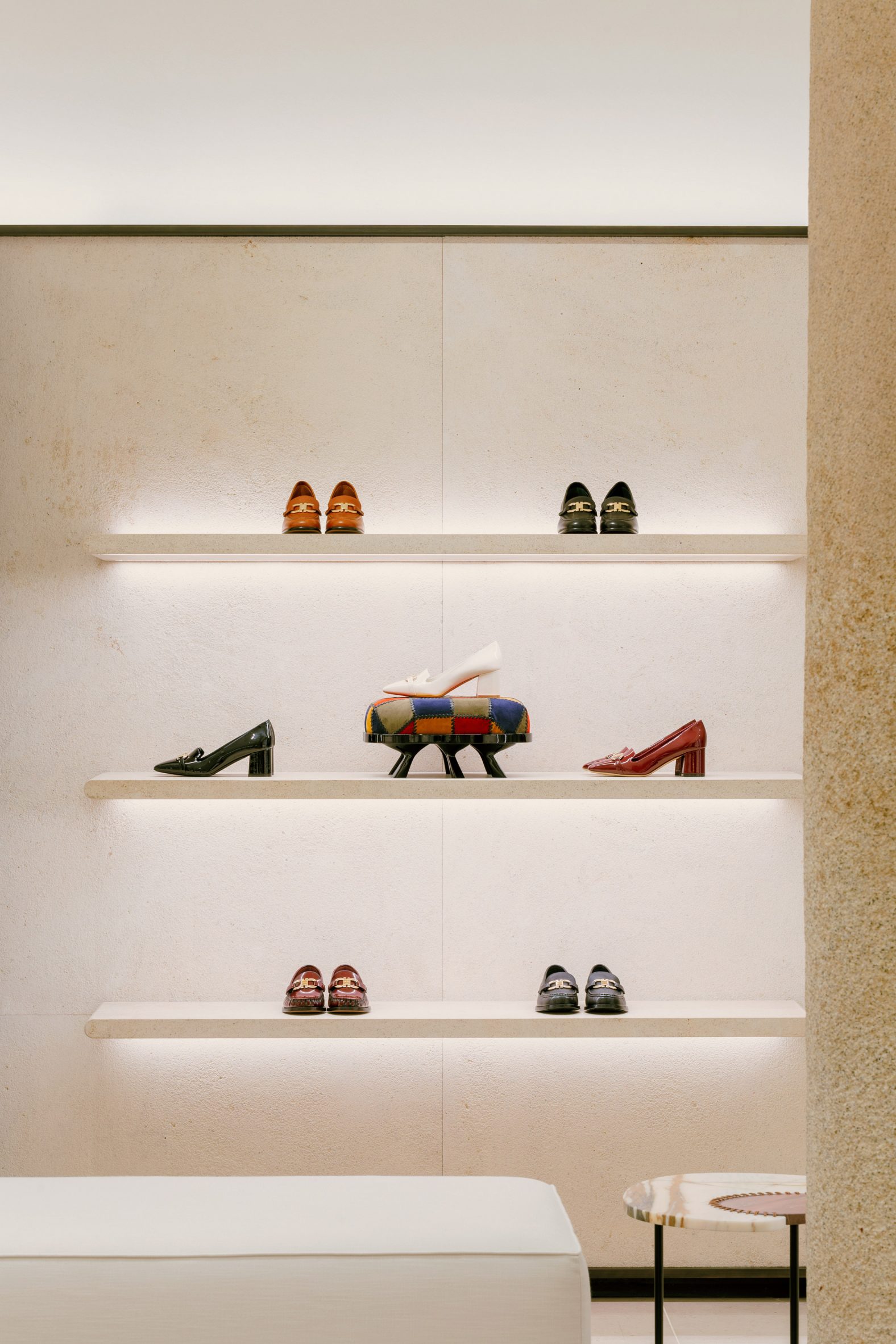
Belgian architect Vincent Van Duysen has completed a boutique in Milan for Italian fashion house Ferragamo, featuring red marble panels and an alcove covered in ceramic petals that offset the original Renaissance-style interiors.
The store is located within Palazzo Carcassola Grandi, which was originally built in the 15th century and now occupies a prime spot on Milan’s Montenapoleone fashion street.

The palazzo was remodelled in the 19th century when it was home to Emilio Morosini – a member of the Italian unification and independence movement known as the Risorgimento.
Van Duysen chose to retain much of the building’s historic character while introducing some surprising contemporary details.

“With this project, we tried to express a timeless Italianicity that is steeped in Ferragamo’s DNA,” said Van Duysen. “A sensual theatrical setting, where the scenic screen is luxuriously elevated and used as a backdrop and space dividing element at the same time.”
“The skilful juxtaposition of modern, essential elements and materials with existing structures such as the columns and the cross vaults creates a pleasing contrast that enhances every feature.”

At the heart of the 280-square-metre interior is a large salon for displaying Ferragamo’s footwear. A minimal material palette comprising Venetian stucco walls, stone flooring and off-white painted ceilings allows the original details to stand out.
Large mirrors set in simple bronze frames enhance the sense of space, while slabs of mottled Napoleon Red marble provide a punchy contrast that nods to the favourite colour of the company’s founder, Salvatore Ferragamo.
The rest of the spaces are organised and designed to evoke the rooms of a grand villa, each with a unique character tailored to reflect the collections it holds.
“The design originates far in the past, in the person of Salvatore Ferragamo himself, who liked to receive his customers as if in his home living room,” explained Marco Gobbetti, Ferragamo’s CEO and managing director.
“This was precisely how he thought of his shop, as a place to come together and converse. This starting point has brought us to this contemporary expression of the intimacy of home and Italian-ness.”
As customers move through the sequence of rooms, they come across areas dedicated to footwear, bags, accessories and clothing, before finally descending a short stone staircase to reach a space displaying silk items.

Ferragamo worked with contemporary designers and gallerists to curate a collection of unusual objects and furniture intended to embody the store’s “contemporary Renaissance spirit”.
An alcove visible through one of the windows is covered in sea-blue ceramics crafted by Andrea Mancuso of Milanese studio Analogia Project, using the same technique he developed for the Aquario collection for Nilufar Gallery in 2022.
Mancuso also used the circular ceramic petals, intended to evoke fantastical aquatic flora, to form a display table placed at the boutique’s entrance.

Side tables found in spaces including a lounge-like vestibule next to the changing rooms are from Andrea Anastasio’s Corallium collection for Giustini/Stagetti Gallery and consist of coloured stone pieces stitched together using leather string.
JoAnn Tan’s Stockholm-based studio created the display tables seen in the windows, which are covered with leather fringe reclaimed from Ferragamo’s production sites.
Van Duysen is known for his multidisciplinary work for the hospitality, fashion and furniture sectors, and has been the creative director of Italian design brand Molteni&C since 2016.

As part of his role, the architect has revamped the firm’s corporate showroom in Giussano, Italy, and designed a “palazzo-like” showroom in New York.
Salvatore Ferragamo established his first business focusing on ladies’ footwear in 1927. In addition to footwear, the firm now produces luxury goods such as bags, accessories and ready-to-wear clothing, all of which are displayed at the Via Montenapoleone showroom.
In 2022, British graphic designer Peter Saville updated Ferragamo’s brand identity, replacing its handwritten logo with a custom serif typeface that references stone inscriptions.
The post Vincent Van Duysen transforms Milanese palazzo into "sensual" Ferragamo store appeared first on Dezeen.
www.dezeen.com










